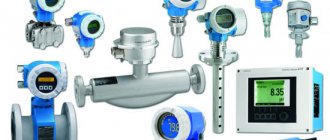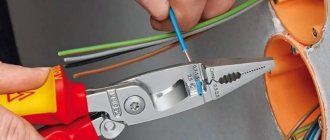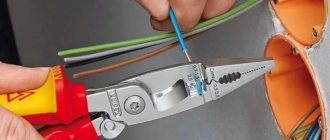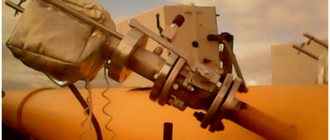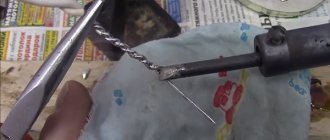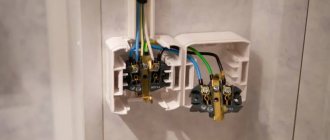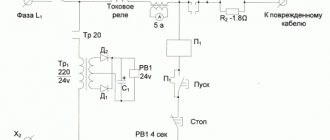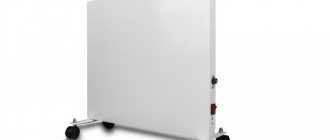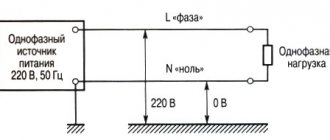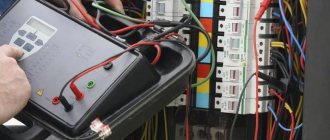A large amount of modern technological equipment is automated. These are pumping stations, boiler houses, power supply systems, and technological equipment. Process automation is often performed using microcontroller control circuits. But data collection for them is carried out by instruments and measuring sensors. Maintenance, repair, installation and adjustment of these devices is carried out by highly qualified specialists.
General information
A lot depends on the functioning of control and measuring instruments and automatic equipment in production, including the timely release of goods, labor safety and the absence of emergency situations. Many people are interested in: what is an instrumentation mechanic? This is an employee who monitors the serviceability of such equipment at the enterprise.
Due to technological progress and constant changes in equipment, this employee is required to constantly develop and improve his skills. Sometimes he is required to be inventive and rationalize the use of technology. The positive qualities of this specialization are a constant income, the significance of the work for society, as well as the great demand for such specialists. Disadvantages most often include the need for constant development of new technologies, the risk of emergency situations and increased responsibility.
What is instrumentation and automation?
This definition includes all control equipment and automation used in practically various production areas and in everyday life. Examples include electricity and water meters, pressure regulators in the oil and gas industry, automation for boiler houses, etc.
Decoding the abbreviation
The abbreviation of this term stands quite simply - instrumentation and automation. The service of the same name performs the following tasks and functions:
- implementation of metrological supervision;
- maintenance, adjustment and repair of measuring equipment;
- implementation of new automation systems at the enterprise, for example, automated control systems.
In some cases, foremen and adjusters from the “Instrumentation and Control” department may be involved in the commissioning of electrical equipment, if there is a production need.
Types of instrumentation and automation
The classification of measuring equipment is made depending on the physical and technical characteristics of the devices, as well as their qualitative and quantitative indicators. By the name of the group it is easy to determine the purpose of the measuring devices included in it:
- instruments for measuring temperature - thermometers (A in Fig. 2);
- devices for determining pressure - pressure gauges (B);
- flow meters of the working medium or other substances - flow meters (C);
- determinants of the composition of gas mixtures - gas analyzers (D);
- tank fill level sensors – level gauges (E), etc.
Figure 2. Different types of measuring instruments
Each of the groups, in turn, is divided into several subgroups, according to their design and operating principle. For example, pressure gauges, among them there are devices for measuring excess pressure, its difference, or displaying the absolute value. The design of these devices can be electrical or mechanical.
Electric contact pressure gauge
Structure of the Instrumentation and Control Department
The structure of instrumentation and automation departments is formed taking into account many factors, of which two key ones can be identified:
- the number of measuring instruments used by the enterprise;
- difficulty of maintenance.
Based on these factors, a centralized or decentralized service structure is formed. Briefly about each of them.
Features of a centralized structure
This method of forming a division is suitable for enterprises whose technological schemes do not involve many measuring instruments, sensors, etc. This makes it possible to combine the operational and repair departments into one service, which is managed by the head of the instrumentation department. At small enterprises, this manager can combine the position of chief metrologist.
One of the groups of service specialists is assigned to certain production areas for regular maintenance of instrumentation (including accounting of devices and their repair) located in the territory specified in the job description. If necessary, by order of the workshop manager, this group of specialists can be reinforced by other service employees, for example, to carry out extensive repair or installation work.
This structure allows you to create teams of narrow specialization (for example, installers, electricians, electricians, electricians, electricians, electronics engineers, etc.). They repair, adjust and install complex equipment, as well as commission new systems. After completion of commissioning work, the equipment is serviced by the team supervising the workshop where the installation was carried out.
Features of a decentralized structure
This method of organization is practiced in large enterprises. The peculiarity is that the repair (methodological) department is a separate service, while operational tasks are assigned to the technological workshop. Each of these divisions has its own leadership. The specialists of the methodological department are headed by the chief metrologist, and the employees of the operation department are subordinate to the head of the workshop.
The responsibilities of the methodological service include all types of planned, above-planned and planned preventative repair work. Payment for services provided is transferred to a separate bank account, it is deducted from the funds allocated to the instrumentation and control technology workshop.
Depending on the characteristics of production, the work of the operation service is organized taking into account the specialization of work, or according to technological characteristics.
In the first option, groups of specialists are created who are responsible for the operation of certain types of instrumentation (alarms, automation, control equipment, etc.). In the second - teams of craftsmen responsible for the operation of equipment of certain technological flows.
In a decentralized structure, the methodological service is financially completely dependent on the technological workshop, since payments for the work done come from its budget.
If a production need arises, the operational service can be strengthened by employees of the repair department or teams responsible for the installation of automation and control systems. The order for this must be issued by the chief instrument operator of the enterprise (metrologist). The operation service must cope with most of the regular commissioning work on its own.
Example of organizational structure of instrumentation and automation
Instrumentation and instrumentation - decoding and differences
The main purpose of instrumentation and automation, consisting of special measuring devices and automation, is to determine precise physical quantities. The devices allow you to see the current water consumption and determine the efficiency of specific equipment.
Explanation of the abbreviation KIP: control and measuring instruments. They measure certain parameters of the product, technological process or some conditions.
As for instrumentation and automation, the decoding of the abbreviation is similar, only supplemented with the word “Automation”.
Automation of production has led to the creation of new things in instrumentation. This especially affected automated production rather than automated production. The difference between these two terms is that the latter is carried out with human participation, and automatic - without it. Car factories are equipped with entire conveyor lines, where all assembly is performed by robots. There are factories equipped with fully automatic sections, lines, workshops - and this is no longer uncommon.
Moreover, some groups of goods cannot be produced in any other way. For example, the production of integrated circuits involves a completely automatic process, since a person is not able to help in this matter - the product being produced cannot be seen without a microscope.
A person’s task in this scheme is to periodically measure certain parameters, so one letter “A” was added to the abbreviation KIP, not counting the connecting conjunction “and”.
Factories of companies specializing in the production of high-tech equipment are equipped with “KIP Automation” services, which ensure the uninterrupted operation of all devices. After all, the slightest malfunction in the service is fraught with the shutdown of all production and subsequent huge losses.
Classification and types of instrumentation
The classification of meters is not complicated, but very extensive. Many categories are divided into several types, which also branch into smaller types. The bulk of these devices differ in the type of parameter being measured, in accuracy and purpose.
First of all, KPIs can be divided into three global categories:
- Analog instruments that are capable of continuously showing changes in the measured parameter. Typical examples are a household mercury thermometer, which is found in every home, and a pressure gauge, a device for indicating pressure. The pressure gauge is used both in industry and in everyday life.
- Digital devices. They convert received or measured data into a digital signal. One such device is an electronic pressure meter. Its digital screen displays a person's blood pressure and pulse values.
- The simplest mechanical meters. They are familiar to everyone since childhood. This is an ordinary ruler, protractor, compass, household mechanical scales. Craftsmen often use calipers.
Each category can be divided according to other criteria:
- According to the type of quantity being measured.
- According to the method of counting.
- According to the proposed measurement accuracy class.
- For its main purpose.
Measured quantities
Each device is designed for its clearly defined tasks and is designed for a range of specific operating conditions. Depending on the type of quantity being measured, measuring instruments are:
- Measuring temperature. These are all kinds of thermometers and thermocouples.
- Indicators of pressure or vacuum (vacuum).
- Checking the level of liquid or solids.
- Controlling the quantity and consumption of various elements. These can be liquids, vapors, gases or solid objects.
- Carrying out quality measurements. For example, density, mixture composition or humidity.
The operating principles of the measuring instruments are almost the same. The measured element influences the primary transducer, after which the signal passes to the measuring element, which converts the influence into the movement of the reading unit and the readings are transferred to the instrument scale.
The simplest measurement is clearly demonstrated by the operation of a pressure gauge. The pressure of the measured medium acts on a curved copper tube through a special fitting. The tube tries to straighten by a certain amount. This action is transmitted to the axis with the index arrow. The axis itself is spring-loaded and strives to return to the zero mark, but under the action of the unbending tube, it deflects and shows the current pressure.
Counting methods
These devices must have a result display unit. According to the method of reading, devices are divided into several types:
- Manually operated devices.
- Indicating devices.
- Recorders.
- Summing signals.
- Signaling devices.
Comparing or hand-operated devices are instruments that require human assistance when measuring quantities. This could be a weight scale or an optical pyrometer.
Indicating devices have a pointer in the form of an arrow that moves along a scale of values. Sometimes the pointer may be stationary, but the dial moves or rotates around the hand. Such devices are either portable or stationary in design. Stationary devices usually continuously measure dynamic quantities. When it is necessary to take measurements from time to time or occasionally monitor stationary meters, portable metering devices are used.
Recording devices independently record the results of continuous measurements onto a medium. The carrier can be a disk, a flash card or an “endless” piece of paper. A record is a diagram showing changes in the object under study over a certain time. Such a record can prevent a production accident by indicating a failure in the operation of a certain unit.
Counters or adding devices reflect the indicators of the counting mechanism and display the sum of the measured value on the screen. Such integrators calculate the consumption of water, gas, and energy.
Signaling devices emit various signals: light or sound, as soon as the measured value reaches a predetermined value. They also notify when a certain event occurs. Such devices include various alarm devices: security, fire, etc.
Separation by purpose
According to their purpose, measuring elements are operational (or technical), laboratory, exemplary, control and reference.
Operating devices are widely used in industry and production. These are working copies that control the entire production cycle. Usually easy to operate, reliable with an intuitive scale and large digital symbols.
Laboratory and control devices are intended for testing and checking other devices or during debugging work in production. They are distinguished by a higher accuracy class. Laboratory instruments are used mainly in laboratories, and technical ones are used in the field of other devices being tested.
The main task of reference and reference devices is to store and reproduce reference data, against which the performance of other measuring devices is compared. If reference devices only store data, then the task of the reference devices is to transfer data from the reference devices to other measuring devices as accurately as possible.
Accuracy of measurements
Each device has its own measurement accuracy or error range. Any device can make a mistake, even a reference one. Precision can be defined as a number between zero and one. The higher the device's accuracy number, the worse its readings.
The sensitivity of the measuring device is an important indicator that influences the correct interpretation of the data obtained. Sensitivity is equal to the ratio of the movement value of the device pointer (arrow or pen) to the magnitude of the change in the measured data that provoked this movement.
Sensitivity is most often reflected in the division price of the device. For example, if a thermometer has a scale of 100 divisions and is designed for a maximum measured temperature of 50 degrees Celsius, then the average sensitivity is equal to the ratio of 100 to 50. That is, the sensitivity of the device (the price of one division) corresponds to two degrees Celsius.
Classification of instrumentation
Basically, instrumentation equipment is classified according to physical and technical characteristics and qualitative and quantitative indicators. The names of the groups indicate the purpose of the measuring instruments related to them:
- Thermometers can be used to measure temperature. They are: liquid, digital, with resistance conversion, thermoelectric. This group also includes pyrometers and thermal imagers.
- Pressure gauges are responsible for determining pressure: its excess, differential or absolute value. They can be mechanical or electrical contact.
- Flow meters will help measure the flow of the working medium or other substances. This group contains various devices, each of which is focused on controlling and changing a specific material (environment).
- The main function of gas analyzers is to determine the composition of gas mixtures.
- Using level gauges, the filling level of containers is determined.
Devices are designed to measure certain physical properties. Based on these characteristics, they are classified as follows:
- Physical properties (temperature and flame) are monitored by thermometers, thermocouples, temperature sensors and flame monitoring.
- Liquid and gaseous media (pressure, liquid level and flow rate) are measured with pressure gauges, pressure gauges, level gauges, and flow meters.
- Electricity indicators are determined using voltmeters, ammeters, meters, transformer voltmeters, bridges, magazines, ohmmeters and high-frequency meters.
- Analyzers and gas analyzers are chemical meters.
- Radiation levels are monitored using Geiger counters, dosimeters and detectors.
- When monitoring executive automation devices, you cannot do without electric igniters, manipulators and servomotors.
It will be interesting➡ How to check the voltage with a multimeter?
Measuring instruments in household appliances
When studying the diagram of any device used in home life (from a washing machine to an iron), you will notice that they are all equipped with devices that measure and control certain parameters:
- hot water - they can be found on boilers or radiators;
- air - relevant for air conditioners and convectors;
- electricity (voltage and current) - similar ones are installed on irons, multicookers, oil heating radiators, etc.
The basis of modern automated systems are microcontroller circuits. In the process of technology development, they replaced control units equipped with circuits with low integration.
Thanks to this, today it is possible to achieve automation of any process, any installation, and even the smallest device.
Types of instrumentation and automation
The basis of instrumentation is formed by a wide variety of instruments and devices, often used in various fields. These can be both household devices and mechanisms that have become widespread in the construction sector and heavy industry. Moreover, within each direction, separate subgroups of control and measuring devices are distinguished.
Electricity meters, ammeters and voltmeters have become widespread to monitor electricity consumption. These devices come in different types, which affects the type of facilities they are used on: in the residential, industrial sector or in public utilities. Most often, the installation of these devices is carried out by specialists. For this reason, these instrumentation devices must have exceptional characteristics in terms of quality and measurement accuracy.
A special group of instrumentation is formed by instruments used to measure pressure. These should be considered various models of pressure gauges, vacuum gauges, pressure meters, etc. These devices have become widespread in various fields, which include industry, boiler systems, and oil refining.
Mention should also be made of control and measuring devices that measure the volume of bulk solids and liquids. In addition to them, there are other subgroups of instrumentation, which include devices used to determine switching costs, protection devices, etc.
Although there are quite a lot of these devices, the most commonly used are thermostats, auto drives, and frequency converters.
As already mentioned, the main purpose of instrumentation and automation is to measure certain quantities. This data is obtained by focusing on the scale and pointer. They can be classified into two types: unilateral and bilateral. For single-sided instruments, the scale is positioned so that its values start on the left side, and the data obtained is limited to one direction. As for double-sided instruments, here the zero mark is allocated strictly in the center. The measurement values can be on the right or left side relative to the central axis.
List
Devices are made to measure certain physical properties; they differ according to physical principles:
- Physical property meters: temperature (thermometers, thermocouples, temperature sensors); flame (flame control).
- Meters for liquid or gaseous media: pressure (pressure gauges, pressure gauges); liquid level (level gauges); liquid or gas flow (flow meters).
- Electrical meters: voltmeters, ammeters, meters, transformer voltmeters, bridges, magazines, ohmmeters, high-frequency meters.
- Chemical meters: analyzers, gas analyzers, pH meters.
- Radiation instruments: Geiger counters, dosimeters, detectors.
- Executive automatic devices: electric igniters, manipulators, servomotors.
Instrumentation and automation in household appliances
Look at any appliance you use at home. Be it a washing machine or a regular iron. All of them are equipped with instruments that measure one or another parameter, control it and change it if necessary. In many of them, hot water is controlled, especially for the heating system (boilers, radiators). There are devices in which the air is controlled - air conditioners, convectors. Or electricity (voltage and current), these include irons, multicookers, oil heating radiators, and so on.
Devices of this type are also installed in household appliances, for example, in an iron they control the heating level
Modern automated systems consist mainly of microcontroller circuits. They, in turn, replaced control units, which included circuits with little integration. This makes it possible today to automate any process, any installation, and even the smallest device. That is, the borders have opened indefinitely, which is very pleasing.
Attention! Microcontroller systems will be, so to speak, deaf and blind, if all kinds of measuring instruments are not connected to them. Without them they are useless. That is why both instrumentation and automation systems were combined into a single system.
Service staff
The correct operation of any of the automated systems must be monitored by a person of a certain profession, namely: an instrumentation mechanic. He repairs, configures devices and components involved in the system, and also carries out their maintenance. The job descriptions describe in detail who a Kipovets is and what he does. The specialist’s functions include servicing not only the control devices themselves, but also other auxiliary components of the system: valves, tachogenerators, gearboxes, cylinders.
Only Kipovtsy are not enough for the work; a whole department, located in a separate room, is responsible for the maintenance and monitoring of devices, the functions of which include:
- proper organization of the work process;
- ordering spare parts;
- project development;
- planning and scheduling, etc.
The structure of the department also includes management specialists: for example, the workshop foreman, who reports to the head of the workshop, is subordinate to an instrumentation mechanic. The entire automation division is under the control of the chief metrologist and his deputy.
The workshop has in its structure a metrological laboratory with KIP electronics engineers, electricians, operators, adjusters and other highly specialized specialists. They repair, check and verify instruments and measuring instruments.
The key place in this structure belongs to the instrumentation and automation engineer, who is obliged to:
- Design and use ACS (automated control systems).
- Collect and process information necessary for drawing up projects.
- Determine tasks for all departments of the workshop and explain the necessary details according to job descriptions.
- Create all programs that determine the operation of the automated control system in accordance with the necessary requirements.
- Prepare the necessary documentation: manuals, instructions, etc.
Job responsibilities and work characteristics
The main professional task of an instrumentation mechanic is to carry out control measures over the operation of special equipment and repair it. The employee is obliged to promptly identify defects in the operation of devices, regulate and adjust their activities.
Each instrumentation and automation specialist must be able to manufacture the parts necessary for the operation of measuring equipment. Ensure the availability of backup equipment for the efficient and uninterrupted operation of automatic devices.
The job responsibilities of a mechanic include training production personnel in the rules and regulations for the operation of devices and automation.
When applying for a job, applicants for the position of instrumentation mechanic are subject to the following requirements:
- know electrical engineering (TOE - parts 1,2,3);
- be able to read, draw, calculate simple electrical, electronic and circuit diagrams;
- find and correct faults in electrical equipment according to diagrams;
- have the skills to read special reference books on electrical engineering;
- organize and carry out installation and repair of electrical equipment, instrumentation and automation;
- know and follow the rules for the safe operation of electrical installations, instructions for the use of protective equipment;
- know the basics of electrical safety when operating equipment.
Key specialists of the instrumentation and control department
At manufacturing enterprises, there are workshops or departments of instrumentation and automation. This service is led by the head of the department or workshop, sometimes these responsibilities are assigned to the chief metrologist of the enterprise. Instrumentation and control departments often include control and measurement laboratories (KIL). Depending on the type of production activity of the enterprise, the staff of the instrumentation and automation department also depends. But there is a minimum set of necessary specialists, these are:
- instrumentation engineer;
- instrument adjustment and repair technician;
- adjuster of instruments, equipment and automated accounting systems;
- mechanic for repair and adjustment of instrumentation and automation;
- electrical technician;
- radio electronic engineer;
Instrumentation and automation mechanic - who is he and what does he do?
An instrumentation and automation mechanic must have a secondary technical education, experience working with equipment and a qualification as a 5th category mechanic. A mechanic for repair and adjustment of instrumentation and automation must know:
- the operating principle of complex equipment on which sensors are installed;
- arrangement of instrumentation, assembly and disassembly technology and adjustment methods;
- device and methods for testing complex control units and assemblies;
- schematic diagrams of devices, operating principles and adjustment methods;
- requirements of standards, instructions regarding the use of instrumentation.
Responsibilities of an instrumentation and automation mechanic:
- be able to find the cause of a breakdown, carry out repair and adjustment work;
- adjustment, installation, testing, adjustment and calibration of instruments and measuring equipment;
- configure end position sensors for valves and cut-off valves;
- open and close parting impulse tubes;
- checking and setting up electrical measuring instruments, control equipment and automation units with electronic systems;
- carry out scheduled maintenance work, identify and eliminate malfunctions in the operation of devices and automation;
- keep records of devices, fill out and maintain forms for devices, submit requests for repairs.
Depending on the equipment operated at the enterprise, the mechanic carries out maintenance and is responsible for the operation of such units as instrumentation and automation cabinets, control panels, consoles, actuators and measuring instruments.
Pros and cons of the profession of an instrumentation mechanic and A.
A mechanic from Kipovets performs repairs and adjustments of control and measuring equipment and complex automated systems.
- demand, respect among workers and engineers;
- the salary is higher than that of the same repair shop mechanic;
- the importance of the work performed and feelings of self-worth;
- respect in the team.
- greater responsibility for the work performed;
- a wide range of official responsibilities;
- risk of injury during repair work.
Responsibilities of an instrumentation mechanic
An instrumentation and equipment mechanic (I&C) is a specialist whose main task is to monitor the uninterrupted operation of various pressure gauges, tachometers, level gauges, and measuring sensors. The specialist ensures that the readings coming from all devices are accurate and timely.
The list of his responsibilities can also include the following:
- a full range of interaction with equipment - repair, adjustment, serviceability check, testing;
- Troubleshooting;
- reading drawings;
- processing of data received from devices;
- drawing up reports.
Nowadays there is a lot of control and measuring equipment. Many of them are stuffed with electronics. So an instrumentation mechanic needs to continuously educate himself and delve into the design of new products.
Moreover, his work requires not only deep knowledge of measuring instruments, but also high general erudition, because an instrumentation mechanic often requires non-trivial approaches to equipment repair. It is also worth noting that in this specialty, unlike many others in this category, the number of female specialists is not inferior.
In this regard, a mechanic in instrumentation and automation must have the following knowledge:
- structure of devices, features of their technological processes;
- device block systems;
- characteristics and features of various materials used in instrument making;
- accepted quality standards for instruments;
- physics;
- mechanics, including the basics of telemechanics;
- electrical engineering;
- radio engineering;
- electronics.
To be allowed to work independently, a specialist must provide a certificate of absence of medical contraindications and undergo special training at the enterprise. Of course, the instrumentation mechanic must be an adult.
Before starting work, an instrumentation mechanic must confirm knowledge of safety precautions, labor protection, and also prove compliance with the category. In production, such exams are held regularly.
It will be interesting➡ Vector diagram of currents and voltages
As part of his job, an instrumentation mechanic will have to work both indoors and outdoors. The employer must provide such employees with weather-appropriate uniforms.
A mechanic on instrumentation and automation can work either individually or as part of a team. This point depends on how the work process is structured and what the specifics of the enterprise are.
Maintenance of measuring devices
Sometimes a lot depends on the quality of instrumentation, so these devices must have such characteristics as reliability, durability, reliability and be accessible for repair.
To avoid errors in measurements, instrumentation requires timely preventive maintenance and regular checks for the reliability of indicators. The technician must monitor the condition and storage conditions of the measuring devices, wipe the dials, scales and signal sensor sockets with a dry cloth.
Before starting work, you need to make sure that the connections are tight and it is advisable to make a control measurement. Faulty devices must be promptly replaced with new ones or repaired in a timely manner.
At large enterprises, there are entire teams and departments of engineers and instrumentation mechanics who monitor the condition and serviceability of instruments and automation.
At the everyday level, we often come across various measuring devices. They have become familiar and commonplace, but they also require proper handling and compliance with safety regulations. The simplest sensor in a washing machine can cause a lot of trouble if it malfunctions. The temperature sensor on household irons is located on the heated surface and will provide unreliable data if it is normally dirty.
With proper care and storage of control and measuring devices, any life, repair, or vacation becomes easier and more enjoyable.
Activity
What is it - an instrumentation mechanic? This is an instrumentation and automation repairman; he is a universal specialist engaged in the repair, maintenance and operation of systems and devices. Among the main tasks of this employee, it is worth highlighting repair and testing work, certification of devices and ensuring the uninterrupted operation of all equipment that is installed in switchboards, circuits and consoles. A desk with power sources is allocated as a workplace for this specialist, and it also includes consoles and panels with equipment installed on them.
The employee spends most of his working time monitoring the operation of automated equipment and measuring instruments. A mechanic must know not only how the equipment entrusted to him works, but also how the technological process at the enterprise works. It is because of this that the employee must constantly improve the level of his qualifications and receive higher ranks as an instrumentation mechanic.
Functions and tasks of instrumentation and automation specialists
The functions of the instrumentation and control department specialists are to ensure the operability and accuracy of the readings of all instrumentation and automated systems of the enterprise. The tasks of this department include monitoring the operation, adjustment and maintenance, repair and restoration of devices.
In the event of equipment failure, the Kipovets must react in a timely manner and replace the failed unit. The mechanic must conduct an inspection and, if possible, repair it within the department or at a specialized service organization. To do this, the instrumentation and control department must have spare parts, instruments and tools. Specialists of this department must conduct metrological supervision of measuring instruments to ensure the operation of all equipment. The instrumentation and control department belongs to the technical service of the enterprise and is functionally subordinate to the chief engineer.
Training for instrumentation mechanics
Due to their broad qualifications, instrument repair specialists are required to receive specialized secondary vocational education.
Instrumentation and automation mechanics are trained in secondary specialized educational institutions with a technical focus. On average, the duration of training takes about two years.
Of course, in some cases it is possible to obtain a position as an instrumentation mechanic with a different technical education. But with this option, you will still need to take professional retraining courses. You can do this yourself before starting work at the enterprise, or you can receive a referral for additional training from your employer.
Special courses are also held for instrumentation mechanics, within which they can improve their knowledge and become familiar with new work methods.
Qualification of mechanics for repair and maintenance of instrumentation and automation devices
Mechanics for the repair and maintenance of instrumentation and automation can have categories from the second to the sixth. Depending on the assigned category, instrumentation mechanics may have a different list of responsibilities and perform work of varying complexity. A 2nd category instrumentation mechanic works with the simplest instruments, carries out diagnostics, adjustments and repairs.
An instrumentation mechanic of the 3rd category carries out the necessary range of work with devices of medium complexity. For example, electrodynamic devices.
An instrumentation mechanic of the 4th category works with devices of average complexity, but, in addition, adjusts parts and draws up diagrams of complex connections.
An instrumentation mechanic of the 5th category works with devices of average complexity, but, in addition, adjusts parts and draws up diagrams of complex connections, and is engaged in servicing devices that have automatic control settings.
An instrumentation mechanic of the 6th category is engaged in servicing devices that have installations for automatic control, works with experienced and unique equipment, conducts inspections for the presence of defects and eliminates them. Instrumentation mechanic of the 7th category Has the necessary knowledge to work with microprocessor-based equipment. Instrumentation and automation mechanic of the 8th category Already works with prototypes of equipment based on microprocessors.
An instrumentation and automation mechanic is a universal specialist who has many responsibilities and performs maintenance, repair and operation of various instrumentation equipment and automatic control systems. At enterprises, the main tasks and responsibilities of the instrumentation and automation repair department are the repair of instrumentation and automation equipment, their periodic verification, certification and submission of devices in a timely manner to state verification authorities, as well as ensuring uninterrupted, trouble-free operation of all elements installed in switchboards, consoles and individual circuits. Mostly, an instrumentation mechanic works in factories, in production, in organizations that use instrumentation and automatic control systems in their work and performs duties for the repair and maintenance of all types of measuring equipment and automation devices. The responsibilities of an instrumentation and automation mechanic also include servicing modern automation systems.
What is instrumentation and automation and what do service specialists do: mechanics and instrumentation and automation engineer
A large amount of modern technological equipment is automated. These are pumping stations, boiler houses, power supply systems, and technological equipment. Process automation is often performed using microcontroller control circuits. But data collection for them is carried out by instruments and measuring sensors. Maintenance, repair, installation and adjustment of these devices is carried out by highly qualified specialists.
About the 8th category in the profession
A specialist with the eighth category is considered the most important and experienced specialist in production. Naturally, this kind of employee is endowed with especially complex functions. What does the professional standard establish in this case?
An instrumentation fitter with the latest level of qualification, in addition to managerial responsibilities, must also:
- draw up and maintain programs for microprocessor controllers, regulators and other devices;
- select the necessary characteristics that would meet the efficient, but at the same time economical and optimal operation of the equipment;
- check, test and commission level gauges, recorders, vibration meters, devices with intelligent pressure sensors, paperless recorders, computer-based devices, etc.
A specialist may have many other functions, but everything here will depend on the orders of his superiors and his place of work.
It will be interesting➡ Description of the electrical circuit diagram with an example
What does an instrumentation engineer do?
This profession has the following responsibilities:
- organizational work related to ensuring uninterrupted operation of equipment;
- responsibility for the implementation of automated equipment;
- management of instrumentation and automation services, in particular, coordination of teams of specialists;
- metrological support;
- preparation of technical documentation (technological map, maintenance schedules, verification, calibration);
Example of a technological map
- long-term planning (action plan for a month, quarter, year);
- acceptance of completed work;
- drawing up instructions in accordance with identified deficiencies and comments;
- organizing control over the implementation of assigned tasks.
Responsibilities of an instrumentation and control engineer
Instrumentation and Control Engineer is a specialist of the department, must have a higher technical education and experience in engineering positions. In some cases, it is necessary to undergo industrial safety certification in Rostechnadzor for the operation of installations.
The instrumentation and control engineer must know the following:
- design and principle of operation of devices, components, automation equipment and enterprise equipment;
- diagram, designs, technical characteristics and necessary indicators for the operation of the serviced equipment and units;
- techniques and methods for inspecting equipment, taking readings, measuring parameters and performing the necessary calculations;
- methods of collecting and analyzing information, making technical and technological decisions.
The responsibilities of the Instrumentation and Control Department Engineer include the following:
- management and coordination of instrumentation and control services;
- organizing the work of the department to ensure trouble-free operation of equipment;
- implementation of automated processes;
- ensuring metrological control of enterprise measuring instruments;
- development of technical documentation (device verification schedules, technological maps, schedules and volumes of maintenance work, etc.);
- development and monitoring of the implementation of department work plans for a month, for a quarter.
The performance of not only the equipment itself, but also the entire enterprise largely depends on the coordinated and competent work of instrumentation and automation specialists.
Verification and decoding of the stamp
All bale instruments used in the automation of production processes are important components of the entire automation system. Taking this into account, each of them is obliged to comply with norms and standards; for this, they must regularly undergo state verification, i.e. testing for accuracy and compliance with specified technical parameters.
Maintenance personnel must replace devices with a verification period that is approaching the end of their verification period with similar ones with permission to use until the end of the state verification process. Devices that have not passed verification are transferred from the category of being in use to decommissioned and handed over to the service that monitors the devices and verifies them.
When verification has been completed and the device is declared suitable for further use, a special mark is placed on it, which confirms that this technical device meets all established requirements.
The shape and color of the applied mark may differ, but the information it carries must be specific:
- The quarter in which the verification was made.
- Year of verification.
- Gosstandart sign.
- Code of the service that carried out the testing.
- Instrumentation and Control Officer Badge and A.
Devices that begin to operate must have a stamp containing all this information, so you can see when the next verification is necessary and whether it is acceptable to use it at the present time.
For different devices, the validity period of the stamp may be different. Some (for example, pressure gauges) must be checked annually, others (voltmeters, ammeters) once every two years. There are devices whose value cannot in any way affect compliance with the technical process, so their verification is not mandatory. In other cases, devices are required to be checked for compliance with standards, which means that their use with a missing or expired stamp is prohibited. You can clarify information about the need for verification according to official standards, which are indicated on the website of the relevant service.
Who is an instrumentation engineer?
Almost any enterprise has many different instruments, sensors, meters and other technical devices. All such equipment must be monitored by someone. An instrumentation engineer is the very specialist who is able to monitor the safe and efficient operation of all devices available in production. Thus, a professional is obliged to periodically inspect the equipment and ensure its high-quality repair or replacement.
It’s worth noting right away that the profession in question is not so simple. After all, a competent specialist must have a fairly wide range of knowledge, skills and abilities. Without all this, you will not be able to carry out your work functions efficiently.
What should an instrumentation and automation engineer know?
The profession has as many as seven categories, and therefore the knowledge of specialists with different qualifications can differ significantly. However, it is worth highlighting the most basic points that are enshrined in the employee’s special job description. Here are some of them:
- fundamentals of technological methods of metalwork production;
- device of the working tool and its purpose;
- techniques, methods and means of working with springs in a hot or cold state;
- methods of performing plumbing work;
- basics of electrical installation work;
- basics of connecting wires;
- properties of materials for tinning;
- basic safety precautions, methods and means of protection during work.
And much more. It is also worth citing the basic practical skills that an employee must have. Among them:
- performing metalworking;
- competent use of tools;
- high-quality soldering;
- elimination of defects, etc.
Thus, a mechanic in instrumentation and automation must have a fairly large stock of knowledge and skills. Moreover, this employee must constantly develop his knowledge and skills. After all, progress does not stand still, and working equipment is constantly being improved.
What types of instrument errors are there?
4.1. Absolute error
Absolute error is the difference in readings between the measured value and the certified value. The absolute error is determined in the units in which the instrument readings are displayed. For example, for temperature transmitters this is degrees Celsius (Kelvin). The absolute error of an instrument may vary from one instrument to another. For example, in the range of 0-300 degrees there is one value. In the range of 300-1000 degrees there is a different value. An example of calculating the absolute error. At a set temperature of 200 degrees Celsius, the device shows 201 degrees Celsius. The difference between the true value and the measured value is 1 degree. This is an absolute error.
4.2. Relative error
Relative error - measured in %. To determine the relative error, it is necessary to determine the absolute error of the device. Then divide the resulting error by the number corresponding to the specified value of the medium being measured. The resulting value is multiplied by 100. The relative error is usually calculated for flow converters. For example, in a special testing device we set the flow rate to 200 cubic meters per hour. The device readings are 201 m3/h. The absolute error will be 1 m3/h. We divide the resulting value of 1 by the flow rate we set to 200. We get the number 0.005. All that remains is to multiply this value by 100%. We get the number 0.5%. This will be the relative error.
4.3. Reduced error
The given error is measured in the same way as the relative error in percent. In this case, this is the error of the device relative to the measurement scale. To calculate the reduced error, we first also determine the absolute error. Then we multiply the resulting value by the measurement limit. And to get % we multiply by 100. The given error is usually indicated for pressure gauges. Let's look at an example. The pressure gauge input has a measuring range of 0-200 kPa, and a testing device supplies 100 kPa. The reading on the pressure gauge corresponds to 102 kPa. The absolute error will be 2 kPa. Dividing 2 kPa by 200 kPa, we get a value of 0.01. Multiplying this value by 100% we get the reduced error of 1%.
4.4. Main error.
Main error. All three of these errors relate to the main error. Determination of relative, reduced and absolute errors is carried out in laboratory conditions, under environmental conditions that meet the requirements of the verification methodology.
4.5. Other types of errors.
Other types of errors. In addition to the main error in measurements, there are many more errors. I will not describe all types of errors. I’ll just list as an example what other types they are. This is additional, systematic, random, statistical, dynamic, instrumental, etc.
A measuring instrument whose characteristics during verification do not exceed the permissible values is considered suitable for further use. For measuring instruments whose error exceeds the permissible values, the primary or secondary converter is adjusted. The setting can be done either through software (by changing the coefficients) or mechanically. For example, by rotating variable potentiometers, changing the position of jumpers, or grinding the diaphragm. Sometimes, of course, we may not even suspect that at the moment some coefficients are changing. For example, when supplying test gas to a portable gas analyzer. The gas analyzer itself changes its settings programmatically. After automatic setup, the gas analyzer gives us a signal that the setup is complete and the date of the next verification.
Rights of an instrumentation and control equipment operator
The specialist in question, like any other officially working person, has a certain range of rights. What are these rights? How and when can they be implemented? The instrumentation and automation engineer, according to a special job description, has the right:
- constantly improve your skills and professional skills;
- demand from management the documents or tools necessary for work;
- arrange all necessary benefits or social guarantees;
- receive wages in full on time;
- propose to superiors various kinds of ideas or plans for improving the organization.
Above, only the most basic rights that the specialist in question has were mentioned.
